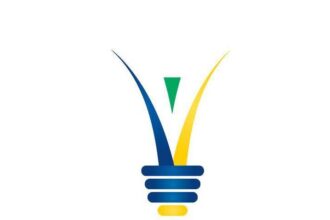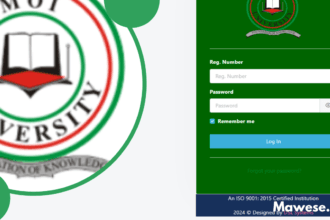Jomo Kenyatta University of Agriculture and Technology (JKUAT) remains one of Kenya’s most prestigious institutions, attracting thousands of students annually. The Latest 2025 University Rankings by EduRank reveal that the university is ranked in the top 50% across 74 research topics and Number 3 in Kenya out of all the Possible 60-plus universities.
Whether you’re a prospective Student planning to join JKUAT for the 2025/2026 academic year or a continuing student at the institution, understanding JKUAT’s fee structure for all its programmes is a crucial step in your academic journey. Like all Universities in Kenya, JKUAT only accommodates students who have cleared their fees to sit for the university examinations at the end of the semester and even participate in a wide range of academic activities on offer. This understanding will empower you and ensure you’re fully prepared for your academic journey at JKUAT.
So, what’s JKUAT’s Fee Structure? This guide explains everything you need to know, including the fee structure for both Self-Sponsored and Government-sponsored students.
JKUAT Fee Structure for Government-sponsored
By Default, JKUAT is a public university mainstream that students who have applied via the KUCCPS Portal ( considered as Government-sponsored students) are given priority when it comes to university admissions at the institution. In addition, the Government-sponsored students end up paying much lower fees compared to students who joined the University on a self-sponsored ticket, as they benefit from subsidised tuition, with annual fees averaging Ksh 37,440–45,197.
To get the proper fee structure for your Particular course, if you are a JKUAT KUCCPS student, you must log in to your JKUAT student portal and download your HEF Band letter, which shows the exact fee allocation as each course has a different fee structure.
JKUAT fee structure for Self-sponsored
Despite JKUAT being a public university, it also accepts admissions from Students who want to join the institution by paying their fees fully without any scholarships or loans, such as HELB. This category of students is identified as Self-sponsored students (SSP), and their fee structure is much higher than the former we have discussed.
Fees for SSP students vary dramatically by program, with medical and technical courses at the higher end. A Bachelor of Medicine costs Ksh 487,911 annually, while Computer Science totals Ksh 207,142 annually. Self-sponsored postgraduate students pay fees in instalments via the JKUAT student portal, with deadlines aligned to semester timelines.
Below you can find the detailed fee structure:
Diploma Programmes
| Program Name | Stage/Year | First Semester (KShs) | Second Semester (KShs) | Annual Total (KShs) |
|---|---|---|---|---|
| Purchasing and Supplies Management | Stage I | 20,760 | 20,760 | 41,520 |
| Purchasing and Supplies Management | Stage II | 20,760 | 20,760 | 41,520 |
| Purchasing and Supplies Management | Stage III | 20,760 | 20,760 | 41,520 |
| Purchasing and Supplies Management | Stage IV | 20,760 | 20,760 | 41,520 |
| Microfinance | Stage I | 20,760 | 20,760 | 41,520 |
| Microfinance | Stage II | 20,760 | 20,760 | 41,520 |
| Microfinance | Stage III | 20,760 | 20,760 | 41,520 |
| Microfinance | Stage IV | 20,760 | 20,760 | 41,520 |
| Human Resources Management | Stage I | 20,760 | 20,760 | 41,520 |
| Human Resources Management | Stage II | 20,760 | 20,760 | 41,520 |
| Human Resources Management | Stage III | 20,760 | 20,760 | 41,520 |
| Human Resources Management | Stage IV | 20,760 | 20,760 | 41,520 |
| Community Development | Stage I | 20,760 | 20,760 | 41,520 |
| Community Development | Stage II | 20,760 | 20,760 | 41,520 |
| Community Development | Stage III | 20,760 | 20,760 | 41,520 |
| Community Development | Stage IV | 20,760 | 20,760 | 41,520 |
| Public Relations | Stage I | 20,760 | 20,760 | 41,520 |
| Public Relations | Stage II | 20,760 | 20,760 | 41,520 |
| Public Relations | Stage III | 20,760 | 20,760 | 41,520 |
| Public Relations | Stage IV | 20,760 | 20,760 | 41,520 |
| Mass Communications | Stage I | 20,760 | 20,760 | 41,520 |
| Mass Communications | Stage II | 20,760 | 20,760 | 41,520 |
| Mass Communications | Stage III | 20,760 | 20,760 | 41,520 |
| Mass Communications | Stage IV | 20,760 | 20,760 | 41,520 |
| Project Management | Stage I | 20,760 | 20,760 | 41,520 |
| Project Management | Stage II | 20,760 | 20,760 | 41,520 |
| Project Management | Stage III | 20,760 | 20,760 | 41,520 |
| Project Management | Stage IV | 20,760 | 20,760 | 41,520 |
| Business Information Technology | Stage I | 20,760 | 20,760 | 41,520 |
| Business Information Technology | Stage II | 20,760 | 20,760 | 41,520 |
| Business Information Technology | Stage III | 20,760 | 20,760 | 41,520 |
| Business Information Technology | Stage IV | 20,760 | 20,760 | 41,520 |
| Business Administration | Stage I | 20,760 | 20,760 | 41,520 |
| Business Administration | Stage II | 20,760 | 20,760 | 41,520 |
| Business Administration | Stage III | 20,760 | 20,760 | 41,520 |
| Business Administration | Stage IV | 20,760 | 20,760 | 41,520 |
| Sales and Marketing | Stage I | 20,760 | 20,760 | 41,520 |
| Sales and Marketing | Stage II | 20,760 | 20,760 | 41,520 |
| Sales and Marketing | Stage III | 20,760 | 20,760 | 41,520 |
| Sales and Marketing | Stage IV | 20,760 | 20,760 | 41,520 |
| Information Technology (SCIT) | Year 1 | 46,353 | 39,731 | 86,084 |
| Information Technology (SCIT) | Year 2 | 39,731 | 39,731 | 79,462 |
Undergraduate Bachelor’s Programs
| Program Name | Year Level | First Semester (KShs) | Second Semester (KShs) | Annual Total (KShs) |
|---|---|---|---|---|
| Bachelor of Commerce | 1st Year | 55,000 | 55,000 | 110,000 |
| Bachelor of Commerce | 2nd Year | 55,000 | 55,000 | 110,000 |
| Bachelor of Commerce | 3rd Year | 55,000 | 55,000 | 110,000 |
| Bachelor of Commerce | 4th Year | 63,913 | 63,913 | 127,826 |
| Bachelor of Purchasing and Supplies Management | 1st Year | 55,000 | 55,000 | 110,000 |
| Bachelor of Purchasing and Supplies Management | 2nd Year | 55,000 | 55,000 | 110,000 |
| Bachelor of Purchasing and Supplies Management | 3rd Year | 55,000 | 55,000 | 110,000 |
| Bachelor of Purchasing and Supplies Management | 4th Year | 63,913 | 63,913 | 127,826 |
| Bachelor of Mass Communication | 1st Year | 55,000 | 55,000 | 110,000 |
| Bachelor of Mass Communication | 2nd Year | 55,000 | 55,000 | 110,000 |
| Bachelor of Mass Communication | 3rd Year | 55,000 | 55,000 | 110,000 |
| Bachelor of Mass Communication | 4th Year | 63,913 | 63,913 | 127,826 |
| Bachelor of Business Information Technology | 1st Year | 55,000 | 55,000 | 110,000 |
| Bachelor of Business Information Technology | 2nd Year | 55,000 | 55,000 | 110,000 |
| Bachelor of Business Information Technology | 3rd Year | 55,000 | 55,000 | 110,000 |
| Bachelor of Business Information Technology | 4th Year | 63,913 | 63,913 | 127,826 |
| Bachelor of Development Studies | 1st Year | 55,000 | 55,000 | 110,000 |
| Bachelor of Development Studies | 2nd Year | 55,000 | 55,000 | 110,000 |
| Bachelor of Development Studies | 3rd Year | 55,000 | 55,000 | 110,000 |
| Bachelor of Development Studies | 4th Year | 63,913 | 63,913 | 127,826 |
| Bachelor of Supply Chain Management | 1st Year | 55,000 | 55,000 | 110,000 |
| Bachelor of Supply Chain Management | 2nd Year | 55,000 | 55,000 | 110,000 |
| Bachelor of Supply Chain Management | 3rd Year | 55,000 | 55,000 | 110,000 |
| Bachelor of Supply Chain Management | 4th Year | 63,913 | 63,913 | 127,826 |
| Bachelor of Human Resource Management | 1st Year | 55,000 | 55,000 | 110,000 |
| Bachelor of Human Resource Management | 2nd Year | 55,000 | 55,000 | 110,000 |
| Bachelor of Human Resource Management | 3rd Year | 55,000 | 55,000 | 110,000 |
| Bachelor of Human Resource Management | 4th Year | 63,913 | 63,913 | 127,826 |
| Bachelor of Entrepreneurship | 1st Year | 55,000 | 55,000 | 110,000 |
| Bachelor of Entrepreneurship | 2nd Year | 55,000 | 55,000 | 110,000 |
| Bachelor of Entrepreneurship | 3rd Year | 55,000 | 55,000 | 110,000 |
| Bachelor of Entrepreneurship | 4th Year | 63,913 | 63,913 | 127,826 |
| BSc Public Health | All Years | 80,000 | 80,000 | 160,000 |
| BSc Community Health & Development | All Years | 80,000 | 80,000 | 160,000 |
| BSc Information Technology (Mombasa) | 1st Year | 65,669 | 58,372 | 124,041 |
| BSc Information Technology (Mombasa) | 2nd Year | 58,372 | 71,310 | 129,682 |
| BSc Information Technology (Mombasa) | 3rd Year | 71,310 | 71,310 | 142,620 |
| BSc Information Technology (Mombasa) | 4th Year | 71,619 | 71,619 | 143,238 |
Master’s Programs
| Program Name | Year Level | First Semester (KShs) | Second Semester (KShs) | Annual Total (KShs) |
|---|---|---|---|---|
| Master’s Programme (General) | 1st Year | 63,000 | 63,000 | 126,000 |
| Master’s Programme (General) | 2nd Year | 63,000 | 63,000 | 126,000 |
| Master’s in Occupational Safety and Health | 1st Year | 80,000 | 96,000 | 176,000 |
| Master’s in Occupational Safety and Health | 2nd Year | 80,000 | 80,000 | 160,000 |
| Master of Science in Computer Systems | 1st Year | 96,000 | 96,000 | 192,000 |
| Master of Science in Information Technology | 1st Year | 96,000 | 96,000 | 192,000 |
| Master of Science in Public Health | 1st Year | 105,000 | 105,000 | 210,000 |
| Master of Science in Public Health | 2nd Year | 105,000 | 105,000 | 210,000 |
Doctoral (PhD) Programmes
| Program Name | Year Level | First Semester (KShs) | Second Semester (KShs) | Annual Total (KShs) |
|---|---|---|---|---|
| PhD Programmes (General) | 1st Year | 140,000 | 140,000 | 280,000 |
| PhD Programmes (General) | 2nd Year | 140,000 | 50,000 | 190,000 |
| PhD Programmes (General) | 3rd Year | 50,000 | 50,000 | 100,000 |
| PhD at ITROMID (Mombasa) | 1st Year | 105,000 | 105,000 | 210,000 |
| PhD at ITROMID (Mombasa) | 2nd Year | 105,000 | 105,000 | 210,000 |
| PhD at ITROMID (Mombasa) | 3rd Year | 105,000 | 105,000 | 210,000 |
| PhD in SCIT Programmes | 1st Year | 140,000 | 140,000 | 280,000 |
How to Pay Fees at JKUAT
JKUAT has made it easier for anyone to pay their programme fee and start easily without having to visit the institution. First, all fee payments are done digitally, either through Bank accounts or M-Pesa pay bill. Additionally, the institution insists that all fee payments must be made on or before registration day for each semester. Also, international students outside the East African Community must pay an additional 20% surcharge on all tuition fees.
Here are the Methods to use for Fee Payments at JKUAT:
Before you pay your fee, make sure to log in to your JKUAT student portal and under the fee section, you can find the statement of fees showing the fee balance you are to pay.
Method 1: Bank Deposit
Use the following accounts:
| Bank | Account Number | Campus/Use |
|---|---|---|
| Kenya Commercial Bank (KCB) | 1107586933 | Mombasa Campus |
| Absa Bank | 0775001216 | General |
| Co-operative Bank of Kenya | 01129098952900 | General |
| KCB SODEL | 1107588871 | Online Students |
| Equity Bank | 0090291251426 | General |
Method 2: M-Pesa
- Open the M-Pesa menu on your phone.
- Select “Lipa na M-Pesa.”
- Choose the “Pay Bill” option.
- Enter the Business Number: 951200.
- Enter your JKUAT registration number (or application number for application fees) as the account number.
- Enter the amount to pay.
- Enter your M-Pesa PIN and confirm the transaction.
- You will receive an SMS confirmation of the payment.
Questions And Answers
What are the requirements for the JKUAT intake 2025?
JKUAT admission requirements vary from one programme to another. Still, the minimum admission requirement is a KCSE mean grade of C+ with at least a C (plain) in both Mathematics and English, especially for Bachelor’s applicants. On the other hand, a credit pass in a relevant diploma is required for diploma holders. Lastly if you are a KACE applicant, you will need at least two principal passes and one subsidiary pass, with a credit pass in Mathematics at the KCE level.
Which is the main campus for JKUAT?
It is located in Juja, Kiambu County.
What is the entry grade for JKUAT?
A KCSE mean grade of C+ with at least a C (plain) in Mathematics and English
Is JKUAT a good university?
JKUAT ranks as one of the best universities in Kenya, especially in science, technology, engineering, and agriculture.
How many semesters are there in a year at JKUAT?
JKUAT operates on a two-semester academic calendar per year, typically with a long and a short semester.
Conclsuion
Understanding how much a programme costs at JKUAT is vital to success in your Academic journey. For the 2025/2026 Academic calendar, JKUAT offers a fee structure that varies slightly from one programme to another, influencing whether you are a government-sponsored student who pays less or a Self-sponsored student who pays More.










